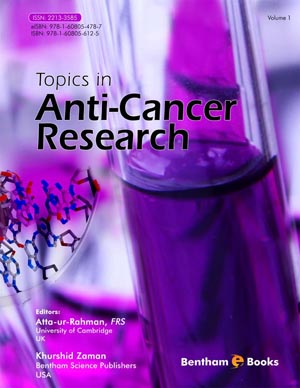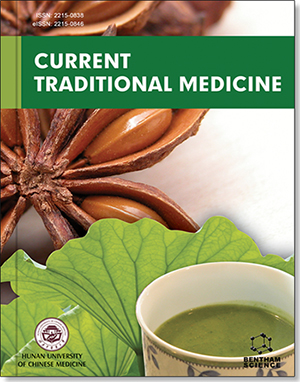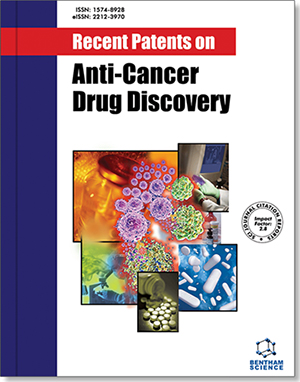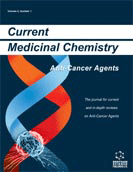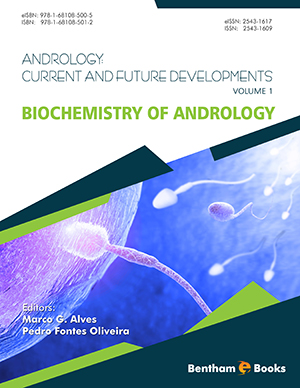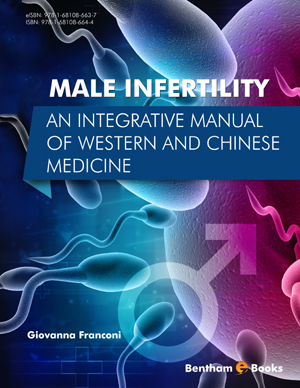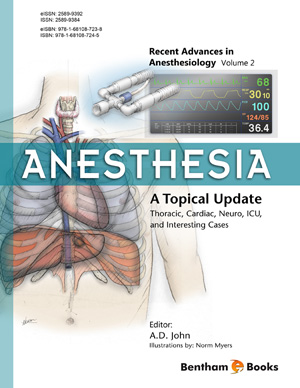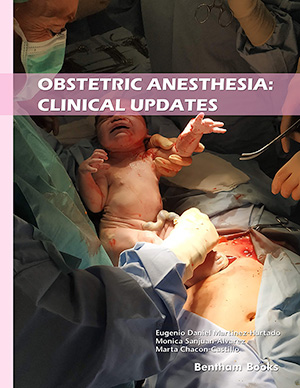Book Volume 1
Foreword
Page: i-iii (3)
Author: Atta-ur-Rahman and Dr. Khurshid Zaman
DOI: 10.2174/9781608054787112010001
List of Contributors
Page: iv-v (2)
Author: Atta-ur-Rahman and Dr. Khurshid Zaman
DOI: 10.2174/9781608054787112010002
Introduction
Page: vi- (1)
Author: Atta-ur-Rahman and Dr. Khurshid Zaman
DOI: 10.2174/9781608054787112010003
Silencing Human Cancer: Identification and Uses of MicroRNAs
Page: 3-30 (28)
Author: Francisco E. Nicolas, Sara Lopez-Gomollon, Alfonso F. Lopez-Martinez and Tamas Dalmay
DOI: 10.2174/9781608054787112010004
PDF Price: $15
Abstract
MicroRNAs (miRNAs) are a new class of negative regulators that repress gene expression by pairing with their target messenger RNAs (mRNAs). There are hundreds of miRNAs coded in the human genome and thousands of target mRNAs participating in a wide variety of physiological processes such as development and cell identity. It is therefore not surprising that several recent reports involved deregulated miRNAs in the complex mechanism of human carcinogenesis, and proposed them as new key regulators to correct the unbalanced expression of oncogenes and tumour suppressor genes exhibited in cancer cells. This chapter summarizes most of the recent patents related to the use of miRNA signatures in cancer diagnosis and prognosis, the detection and profiling of miRNAs from tumour samples and the identification of oncogenes and tumour suppressor genes targeted by miRNAs, as well as new cancer therapies based on miRNA modulators.
Insulin-Like Growth Factor Receptor Inhibitors: Categorical Lack of Efficacy or Lack of Personalised Medicine?
Page: 31-89 (59)
Author: Madeleine Hewish, Ian Chau and David Cunningham
DOI: 10.2174/9781608054787112010005
PDF Price: $15
Abstract
The insulin-like growth factor 1 receptor (IGF-1R) and its associated signalling system provoked considerable interest over recent years as a therapeutic target in cancer. Whilst preclinical evidence for the efficacy of IGF-1R pathway inhibitors is strong, only very modest signals of activity have been observed in the clinical setting thus far. This has prompted several pharmaceutical companies to terminate their respective drug development programmes. Far from representing an ineffective strategy, we believe that the lack of efficacy hitherto observed in unselected trials is at least partially due to a failure to restrict the use of these inhibitors to those most likely to benefit. Both patient and tumor factors, including the complex signalling networks that interact with the IGF-1R pathway, are important mediators of response. In this updated chapter, we focus on the preclinical studies and retrospective clinical data that have attempted to identify biomarkers that predict for efficacy and resistance. Some intriguing results are beginning to emerge which should, in time, prompt for a reappraisal of promising agents and lead to a second generation of clinical trials, this time in populations enriched for those likely to benefit. In particular, we discuss the available clinical data for the IGF-1R antibodies figitumumab (CP-751,871), cixutumumab (IMCA12), ganitumab (AMG-479), dalotuzumab (MK-0646), robatumumab (R1507), the IGF-1R tyrosine kinase inhibitors linsitinib (OSI-906), XL228 and AXL1717, and also consider some more recently developed agents, including the IGF-1/IGF-2 neutralising antibody MEDI-573. Finally, we review some recent patents in the field, including IGF- 1R combination therapeutics and biomarkers.
Heparan Sulfate Proteoglycans: Novel Targets for Breast Cancer Treatment
Page: 90-112 (23)
Author: Chuay-Yeng Koo, Yin-Ping Sen, Boon-Huat Bay and George W. Yip
DOI: 10.2174/9781608054787112010006
PDF Price: $15
Abstract
Breast carcinoma is a leading cause of mortality among female cancer patients worldwide. Heparan sulfate proteoglycans, found predominantly on cell surfaces and in the extracellular matrix, are known to regulate breast cancer cellular behavior. Many studies have shown that these molecules serve as potential biomarkers for breast cancer. Further, they have aberrant expression patterns and participate in various molecular signaling pathways in tumor progression. There is substantial interest in targeting heparan sulfate proteoglycans for cancer treatment, which needs to be tailored in accordance to the roles that each proteoglycan plays in cancer biology. Current clinical trials using phosphomannopentaose sulfate (a heparan sulfate mimic) and various forms of heparin have produced promising results in breast cancer patients. Novel therapeutic agents could potentially be developed to regulate the proteoglycan core proteins as well as enzymes that modify heparan sulfation patterns. This chapter discusses the current patented use and future prospective applications of heparan sulfate proteoglycans as therapeutic targets for breast cancer treatment.
Adjuvant Therapy for Renal Cell Carcinoma
Page: 113-139 (27)
Author: Sebastiano Buti, Melissa Bersanelli, Maddalena Donini and Andrea Ardizzoni
DOI: 10.2174/9781608054787112010007
PDF Price: $15
Abstract
Renal cell cancer incidence is fastly growing worldwide. In spite of major advances in the treatment of metastatic disease, to date there is no adjuvant therapy proven feasible in high risk patients after radical resection. An effective adjuvant agent against renal cell cancer should be relatively non toxic, have estabilished efficacy in the metastatic setting and have demonstrated effectiveness against the standard of care in randomized Phase III trials. The development of adjuvant therapy requires the proper identification of patients at highest risk of relapse; our ability to predict the recurrence has much room for improvement. To date, only an autologous vaccine has achieved a significant benefit in the adjuvant setting for renal cell carcinoma. The recent arrival of new drug classes, such as tyrosine kinase inhibitors and monoclonal antibodies, strongly improving overall and progression free survivals in the metastatic disease, has renewed the hopes on the adjuvant treatment of the disease. Several studies have been performed in the past using radiation treatment and systemic agents, including chemotherapy, immunotherapy and hormonal treatments, with adjuvant purpose; new trials are in progress to evaluate the effectiveness of antiangiogenic agents in this setting. An overall review of the completed and upcoming trials and patents on this issue shall be discussed in this chapter.
Targeted Therapies in the Treatment of Advanced Renal Cell Carcinoma
Page: 140-175 (36)
Author: Emmanuel Seront and Jean-Pascal Machiels
DOI: 10.2174/9781608054787112010008
PDF Price: $15
Abstract
Renal cell carcinoma (RCC) represents 5% of adult epithelial cancers and clear cell RCC is the most frequent histological subtype. Improved understanding of the molecular pathways implicated in the RCC pathogenesis has led to the development of specific targeted therapies, which have better efficacy and tolerability than cytokine therapy. Seven medications have been shown to increase progression-free survival (PFS) in patients with metastatic clear cell RCC: bevacizumab, sorafenib, sunitinib, pazopanib, axitinib, everolimus and temsirolimus. Bevacizumab (+ interferon-alpha), sunitinib, temsirolimus (in poor-risk groups) and pazopanib have proven to be effective as first-line palliative treatments. Sorafenib, everolimus, and axitinib have demonstrated benefits in patients who have failed prior therapy. This chapter provides a comprehensive patent review of the new targeted therapies currently available in clinical practice to treat patients with metastatic unresectable RCC and discusses these drug-associated complications.
Rationale for an Intraperitoneal Gemcitabine Chemotherapy Treatment for Patients with Resected Pancreatic Cancer
Page: 176-191 (16)
Author: Paul H. Sugarbaker, Dal Yoo, O. Anthony Stuart and Lana Bijelic
DOI: 10.2174/9781608054787112010009
PDF Price: $15
Abstract
Currently, the surgical management of pancreas cancer is recognized around the world as inadequate. Long-term survival is rare even though there is a potentially curative R0 resection. There is a strong rationale for the use of chemotherapy in the operating room to reduce local-regional and hepatic sites of recurrent/progressive disease. Gemcitabine monotherapy administered by an intraperitoneal route in the operating room with hyperthermia and then for long-term treatment postoperatively has a strong pharmacologic basis. The exposure of peritoneal surfaces to intraperitoneal gemcitabine is approximately 500 times the exposure that occurs within the plasma. By analogy to another lethal disease, ovarian cancer, intraperitoneal gemcitabine chemotherapy using following potentially curative resection is supported. A standardized treatment with intraoperative chemotherapy monitoring of gemcitabine would greatly facilitate further improvements in pancreas cancer treatment and lead the way to an evolution of more successful treatment strategies of this dread disease. The aim of this chapter is to present the recent available medical information and patents applicable to patients with resected pancreatic cancer.
Restoring p53 Function: Novel Anticancer Approaches for an Old Foe
Page: 192-227 (36)
Author: Alessandra Leone, Alessandra Di Cintio, Elena Di Gennaro, Francesca Bruzzese and Alfredo Budillon
DOI: 10.2174/9781608054787112010010
Abstract
p53 Tumor suppressor gene encodes for a critical cellular protein that regulates the integrity of the cell and can induce cell cycle arrest and/or apoptosis upon cellular stresses of several origins, including chemotherapeutics. Loss of p53 function occurs in an estimated 50% of all cancers by mutations and deletions while in the presence of wild-type p53 alleles other mechanisms may affect the expression and activity of p53. Alternate mechanisms include methylation of the promoter of p53, deletion or epigenetic inactivation of the p53-positive regulator p14/ARF, elevated expression of the p53 regulators murine double minute 2 (MDM2) and MDMX, or alteration of upstream regulators of p53 such as the kinase ATM. MDM2 is a p53 E3 ubiquitin ligase that mediates the ubiquitin-dependent degradation of p53 while p14/ARF is a small MDM2-binding protein that controls the activity of MDM2 by displacing p53 and preventing its degradation. MDMX antagonize p53-dependent transcriptional control by interfering with p53 transactivation function.
The understanding of the key role of p53 inactivation in cancer development generated considerable interest in developing compounds that are capable of restoring the p53 functions. Several patents have been issued on such compounds. Adenovirus-based p53 gene therapy as well as small molecules such as PRIMA that can restore the transcriptional transactivation function to mutant p53, or NUTLIN and RITA that interfere with MDM2-directed p53 degradation, have tested in a preclinical setting and some of these approaches are currently in clinical development.
Targeted Delivery of Short Interfering RNAs - Strategies for In Vivo Application
Page: 228-253 (26)
Author: Ahmad F. Hussain, Ulrich Wullner, Inga Neef, Mehmet K. Tur and Stefan Barth
DOI: 10.2174/9781608054787112010011
PDF Price: $15
Abstract
During the last decade, an increased amount of oligonucleotides have been developed as promising therapeutic agents for treatment of diseases. siRNA/shRNA is one promising example of therapeutic oligonucleotides which can inhibit target gene expression by degrading mRNA in a highly sequence-specific manner. Although, siRNA shows potential therapeutic properties, the specific delivery remains a major barrier for clinical development of siRNA-based drugs. In this chatper, we provide an overview of current progress in the field of siRNA/shRNA delivery and discuss recent patents and technical advances in the development of efficient small RNA delivery vehicles including strategies to enhance their pharmacokinetic properties, to promote their cellular uptake, and to foster corresponding clinical trials.
Personalized Medicine for Pediatric AML: New Targeted Strategies
Page: 254-290 (37)
Author: Riccardo Masetti, Katharina Kleinschmidt, Carlotta Biagi and Andrea Pession
DOI: 10.2174/9781608054787112010012
PDF Price: $15
Abstract
Acute myeloid leukemia is a heterogeneous group of diseases accounting for 15- 20% of all tumors diagnosed in children under 15 years of age. The past few decades have yielded remarkable improvements in long-term outcomes for children with acute myeloid leukemia. A better risk-group stratification of patients based upon clinical and biologic features, a more effective use of anti-leukemic agents and enormous improvements in supportive care have increased the probability of cure by approximately 60%. The increase in our understanding of the biology of this disease has resulted in the development of molecularly targeted therapies that are potentially more effective and less toxic than the standard approaches. We here review novel molecularly targeted drugs for the treatment of childhood acute myeloid leukemia such as monoclonal antibodies, inhibitors of signalling molecules, proteasome inhibitors and epigenetic agents. For these recently patented agents, we also provide a detailed analysis of the published preclinical data and the clinical trials that have been completed.
Pharmacology and Clinical Efficacy of Cladribine in Hematological Malignancies - Older and Newer Formulations
Page: 291-333 (43)
Author: Tadeusz Robak, Anna Korycka-Wolowiec and Ewa Robak
DOI: 10.2174/9781608054787112010013
PDF Price: $15
Abstract
Cladribine (2-CdA, 2-chlorodeoxyadenosine), a purine nucleoside analog, is cytotoxic to both proliferating and quiescent cells and the mechanism of its action may proceed along several pathways. It was approved by the FDA for treatment of hairy cell leukemia and in some European countries for treatment of chronic lymphocytic leukemia, however it shows high efficacy in both lymphoid and myeloid malignancies. This agent is usually administered as continuous or intermittent intravenous infusion, however, newly patented formulations have been developed for its subcutaneous and oral administration. The use of cyclodextrin solubilizes the 2-CdA and renders it more stable against hydrolysis in the low pH of the stomach contents. Recently, various new agents with a structure similar to cladribine have been investigated. In the search for new nucleoside phosphorylase and nucleosidase inhibitors, the synthesis and bioactivity of compounds where the location of nitrogen atom in the sugar ring is varied, and additionally where two nitrogen atoms form part of the sugar ring, have been investigated. Additionally, the most potent thymidine phosphorylase (TP) inhibitor, TPI-FIG.7 has been shown to have some antiangiogenic activity in vivo and the induction of apoptosis or cell death in leukemic cells using the purine nucleoside analogue LMP-420, 2-amino-6-chloro,9-[5(dihydroxylboryl)-pentyl]purine has been described. This chapter summarizes recent achievements in the understanding of 2-CdA mechanism of action, pharmacokinetics of different pharmaceutical formulations and its approved and possible future applications in the treatment of hematological malignancies.
Current Treatment Options in the Management of Locally Advanced Squamous Cell Cancers of Head and Neck
Page: 334-367 (34)
Author: Shahzad Raza, Areej Khan, Monis Khan, Jaffar A. Al-Hilli, Mahadi A. Baig, Tulay Aksoy, Madhumati R. Kalavar and Rashmi Ramasubbaiah
DOI: 10.2174/9781608054787112010014
PDF Price: $15
Abstract
Head and neck squamous cell cancers (HNSCCs) represent 4 to 5% of all solid malignancies. Despite improvements in diagnostic techniques, 60% of patients will present with locally advanced HNSCCs with a median 5-year overall survival of approximately 40-60%. Recent clinical trials have altered the treatment landscape by refining existing forms of radiation, incorporation of IMRT, choice of chemotherapeutic agents, introduction of biological and targeted therapy, immunotherapy and gene therapy. The curative treatment of locally advanced head and neck squamous cell cancer has been advanced greatly with the establishment of chemotherapy. More recently, Cetuximab, a monoclonal antibody directed against the human epidermal growth factor receptor (EGFR), has been approved in combination with RT in patients with locally advanced HNSCCs. Researchers have focused on other monoclonal antibodies against EGFR (Zalutumumab, Nimotuzumab), anti-angiogenic agents (Bevacizumab), tyrosine kinase inhibitors (gefitinib, erlotinib, sorafenib, sunitinib), Vandetanib, an antagonist of both vascular endothelial growth factor receptor (VEGFR) and the EGFR, monoclonal antibodies against EGFR (Zalutumumab, Nimotuzumab), CUDc-101, a mutli-targeted agent against histone deacetylase (HDAC), epidermal growth factor receptor (EGFR) and human epidermal growth factor receptor 2 (HER2) inhibitors are currently being tested in different phases of clinical trials. Other treatments modalities like gene therapy and immune therapy has shown promise in the management of these cancers.
Nevertheless, identification of predictive biomarkers of resistance or sensitivity to these therapies remains a fundamental challenge in the optimal selection of patients most likely to benefit from them. However, increase in efficacy comes at the cost of increased toxicity. The discovery of human papilloma virus (HPV) as a prognostic tool is likely to change the landscape of treatment of HNSCCs. The current chapter focuses on insight into current treatment options in the management of locally advanced head and neck cancers and updates on the clinical trials and patents using new investigational agents in the management for HNSCCs.
Compounds with Anti-Inflammatory Effect Used for Preventing or Regressing Tumors
Page: 368-391 (24)
Author: Ricardo de Souza Pereira and Josiele Latties
DOI: 10.2174/9781608054787112010015
PDF Price: $15
Abstract
The current anticancer drugs used in human therapy cause toxic or side effects that can lead to a reduction in the amount of medicine to be administered and, in some cases, discontinuation of the therapy. This fact leads to an increase in the growth of the primary tumor and/or the occurrence of metastasis. For this reason, the development of new anti-cancer drugs with fewer side effects is needed. Evidences from clinical and preclinical studies indicate that COX-2–derived prostaglandins participate in carcinogenesis, inflammation, immune response suppression, apoptosis inhibition, angiogenesis, and tumor cell invasion and metastasis. Patents and articles on anti-cancer effect of anti-inflammatory drugs are discussed in this chapter. Some recent anti-cancer drugs are based on selective COX-2 inhibitors and derivatives synthesized from them. This may be the way for new anti-tumor drugs with lower side effects. Selective COX-2 inhibitors are being mixed with new anti-cancer drugs in order to obtain better results in regression of tumors. Natural products such as resveratrol and SB-73 are selective COX- 2 inhibitors and have anti-inflammatory and anti-cancer properties.
Author Index
Page: 392- (1)
Author: Atta-ur-Rahman and Khurshid Zaman
DOI: 10.2174/9781608054787112010016
Subject Index
Page: 393-414 (22)
Author: Atta-ur-Rahman and Khurshid Zaman
DOI: 10.2174/9781608054787112010017
Introduction
The Topics in Anti-Cancer Research e-Book series covers important advances on both experimental (preclinical) and clinical cancer research in drug development. Major developments in the fields of oncology are covered including mechanisms, tumor and stem cell biology, metastasis, tumor suppressors, cancer drug targets, drug clinical trials, cellular and molecular pathology, genomics and genetics, diagnostics, translational therapeutics, tumor immunology, and cancer prevention and epidemiology. Topics in Anti-Cancer Research is an essential e-book series for oncologists, pharmaceutical scientists, clinicians, and to researchers in other related disciplines.

